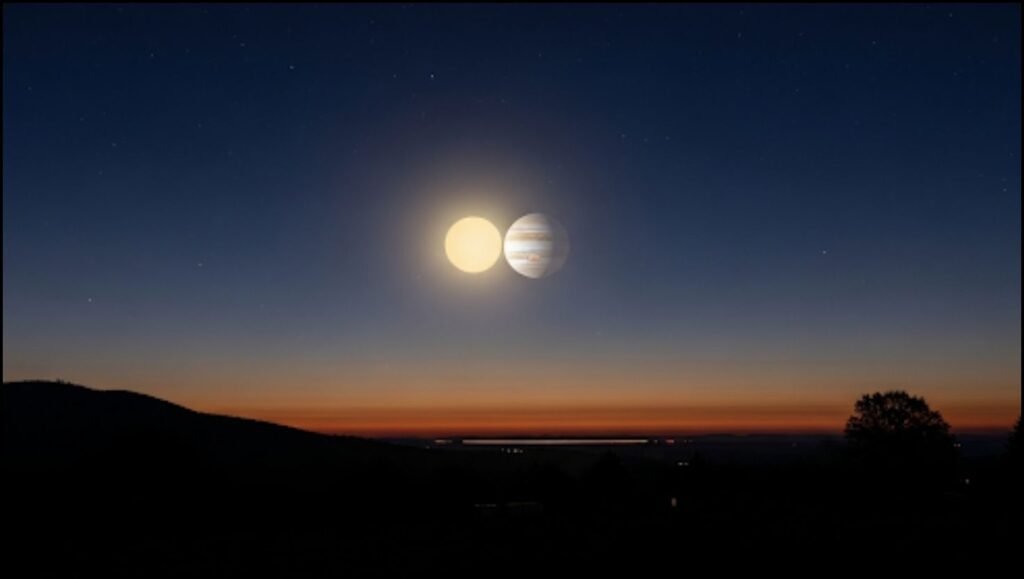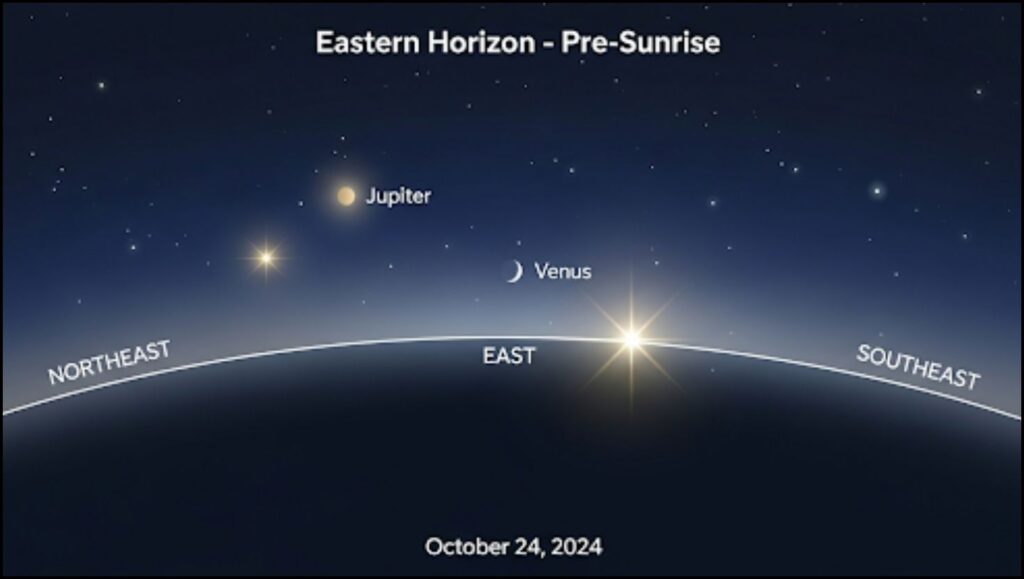
This week, skywatchers around the globe have a prime opportunity to witness a spectacular Venus Jupiter conjunction, a celestial event where the two brightest planets in the night sky appear exceptionally close together. For several mornings, Venus and Jupiter have been drawing nearer, and their closest apparent approach is expected to occur on August 12 and 13. The celestial alignment is a striking visual event, requiring no special equipment to enjoy.
The Science Behind a Planetary Conjunction
A planetary conjunction is a phenomenon in which two or more celestial bodies appear to pass close to one another in the sky. This is not a physical proximity; rather, it is a matter of perspective from Earth. According to NASA, planets orbit the Sun on roughly the same plane, and as they move at different speeds, they occasionally align from our vantage point. While all conjunctions are visually compelling, the meeting of Venus and Jupiter is particularly notable because they are the brightest planets visible, shining as two brilliant points of light.
The two planets, which are physically hundreds of millions of kilometers apart, will appear separated by only about one degree in the sky on the morning of August 12. To visualize this distance, a clenched fist held at arm’s length covers roughly 10 degrees of the sky, while a pinky finger covers about one degree. This exceptionally close alignment will make them appear as a brilliant “double star” in the eastern sky before sunrise.
When and Where to Look for the Celestial Show
The best time to view the Venus Jupiter conjunction is in the hours before local sunrise, when the planets are high enough above the horizon to be clear of atmospheric interference and bright enough to be seen in the fading darkness. Observers should look towards the eastern horizon.
Dr. Anya Sharma, a senior fellow at the Center for Astrophysics | Harvard & Smithsonian, stated in a recent press release that the event is a “perfect opportunity for both seasoned astronomers and casual skywatchers.” She added, “You don’t need a telescope, binoculars, or any fancy equipment. Just wake up early, find a spot with a clear view of the eastern horizon, and look up. The sight of these two worlds shining together is truly unforgettable.”

The planets will be visible from virtually all locations worldwide, though specific viewing times will vary depending on latitude. For observers in the Northern Hemisphere, Venus and Jupiter will rise in the pre-dawn sky against a backdrop of constellations like Gemini. The planets have been getting closer since the beginning of the month and will begin to separate again after August 13, making this week the optimal viewing period.
A Conjunction’s Place in Astronomical History
While the alignment of planets is a recurring event, the apparent proximity and timing of this particular Venus Jupiter conjunction make it especially favorable for observers. The two planets typically conjoin every 3.2 to 3.3 years. However, not all these meetings are easily visible. Some occur when the planets are too close to the Sun in the sky, or during daylight hours, making observation impossible. The August 2025 event is considered a “good” conjunction because the planets are well-separated from the Sun’s glare, rising high enough to be seen clearly before dawn.
The next similar conjunction of these two planets is not expected until November 2028. Astronomers also note that on November 22, 2065, an even rarer event will occur when Venus will pass directly in front of Jupiter in what is known as a planetary occultation—a phenomenon that has not been visible since 1818.
Tips for Optimal Viewing
- Find an Open Horizon: The planets will be relatively low in the sky, so a location with an unobstructed view of the eastern horizon is crucial. This could be a park, a field, or an observation deck.
- Time It Right: The best time to begin looking is about 45 minutes to an hour before your local sunrise. This is when the sky is dark enough for the planets to be brilliantly visible, but they have already risen sufficiently high.
- Use Binoculars (Optional): While not necessary, binoculars will enhance the view, revealing Jupiter’s four largest moons as tiny pinpricks of light and potentially showing Venus’s crescent phase. Because of their exceptional proximity, both planets and Jupiter’s moons may fit within a single wide-field binocular view, a rare treat.
- Consider Photography: For those interested in astrophotography, the conjunction is an excellent subject. A standard camera on a tripod with a slightly longer exposure can capture the beauty of the two planets alongside the pre-dawn sky.
A Week of Skywatching Events
This week also coincides with other notable astronomical events. The annual Perseid meteor shower, one of the most popular of the year, will peak around the same time. While a nearly full moon this year may wash out many of the fainter meteors, bright shooting stars may still be visible in the pre-dawn hours, providing an added bonus for early-rising stargazers.
Furthermore, a slim crescent moon will join Venus and Jupiter in the same region of the sky on the mornings of August 19 and 20, creating another striking visual alignment. For astronomers and the public alike, these overlapping events make the last half of August a particularly rich period for celestial observation.
A New Visitor from Deep Space: What Scientists Know About Interstellar Object A/2025 F1
